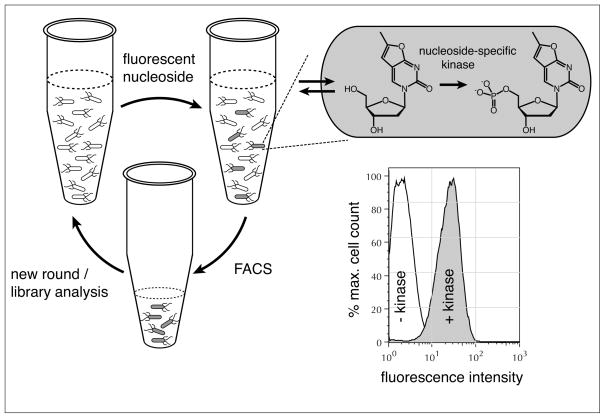Fig. 6.
Schematic overview of our new kinase screening assay based on fluorescence activated cell sorting (FACS). Accumulation of the fluorescent nucleoside (or nucleoside analog) monophosphate in bacteria that express a kinase with the desired substrate specificity raises the fluorescence intensity of the host cell. FACS can rapidly detect and separate this subpopulation of the cell culture for subsequent characterization or additional rounds of directed evolution. The assay was validated with E. coli cells, expressing either DmdNK with thymidine kinase activity (+ kinase) or the thymidine kinase activity-deficient human dCK (− kinase). Upon incubation with furano-thymidine, the fluorescence intensity increase 20 to 30-fold in host cells expressing DmdNK. Figure adapted from ref. [42].

